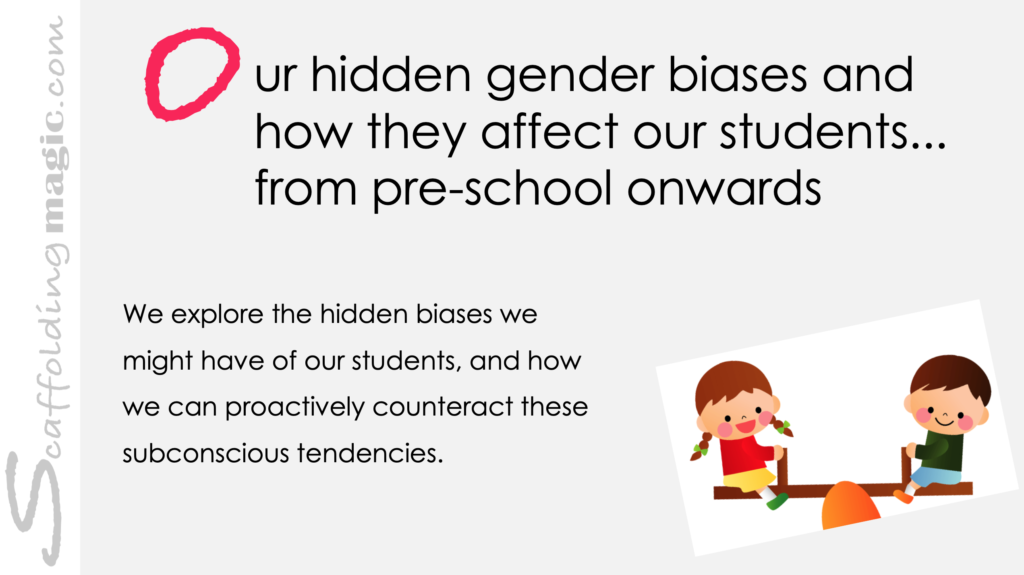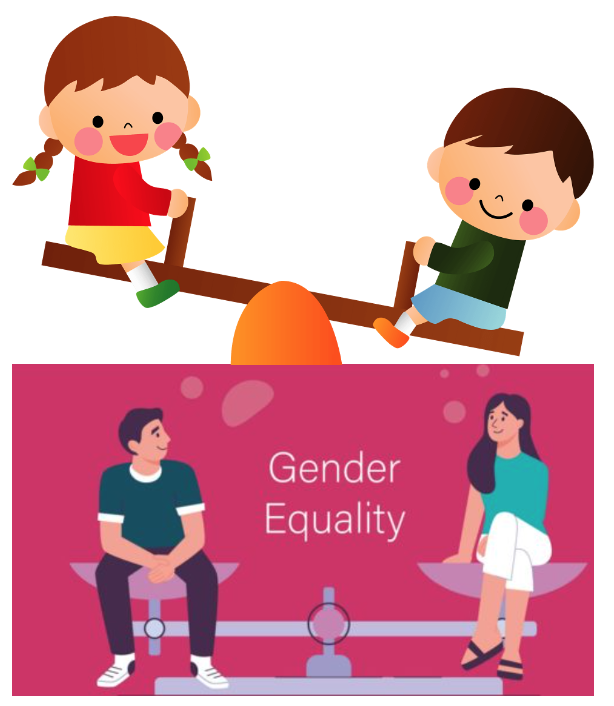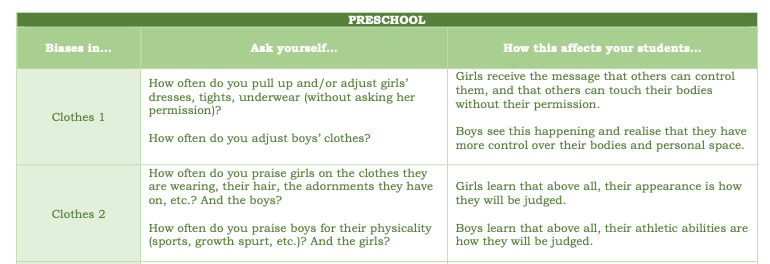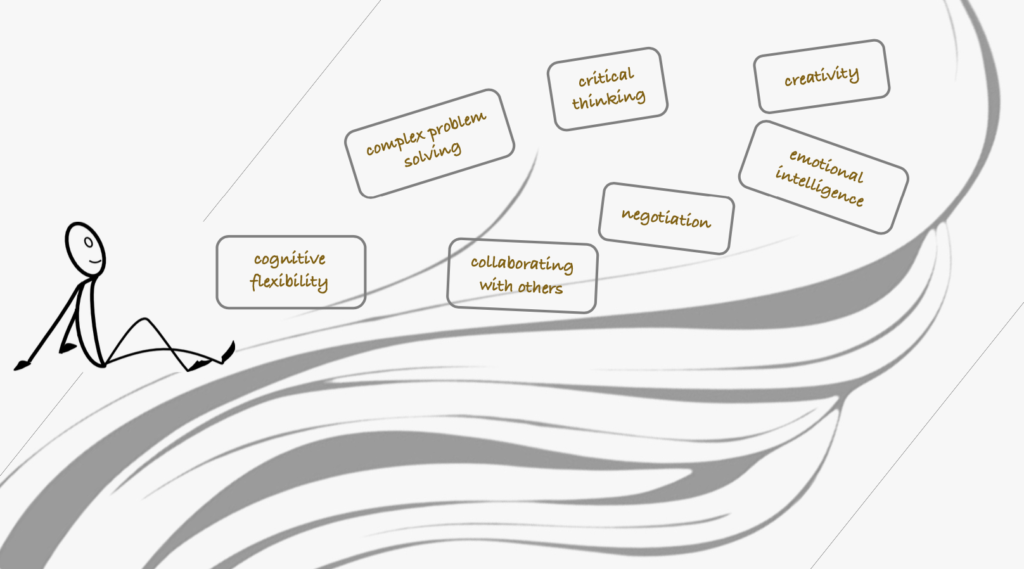
Download PDF of blog here.
Sociologists of education have demonstrated that schools have hidden curriculums. This includes shaping students from the outside in the presumption that to shape the body is to shape the mind, ultimately making manipulated differences appear and feel natural. In language classes, we have a unique opportunity to address this issue through communicative methods.
Karin A. Martin
Becoming a Gendered Body:
Practices of Preschool
What are our preconceptions about ‘appropriate’ gender behaviour?

Do we treat our male and female students equally?
Do we have the same expectations of them?
Are we sure about that?…
Whether we realise it or not, our schools support societal expectations – either hidden or blatant – that affect our students both personally and scholastically. Gender presuppositions happen to be at the top of this list and teachers – whether we are aware of it or not – we are involved in promoting these biases. From Pre-School upwards, we are either unconsciously complicit or proactively deconstructing these hidden agendas, and in so doing have a life-long influence on how students see themselves in the world.
Still don’t believe it?
Let me give you an example through an anecdote. Last year, I was at a lunch with a friend at a restaurant, having an intense conversation about some injustice or other, when I became distracted by a young woman at a table next to us. I was fascinated by how she was sitting – tall and straight with her head held high and looking directly and steadily at her companions as she talked. What fascinated me most, however, was that she was sitting at a bench with her legs splayed wide open. In other words, she was unapologetically, owning her space from bottom to top. I have to admit that her audacity took my breath away.
Audacity? you ask.
Unless, like I, you grew up in a household that fostered 1960s values about women, you might be thinking: What’s wrong with a female sitting with her legs spread wide apart.
Well really, absolutely nothing.
Yet, according to most societies: everything.
Cultural differences in physical expectations
In most Western cultures, girls/women are expected to sit with our legs together or crossed (modesty), stand straight but with rounded shoulders (weakness), look down frequently (submission), and speak in high voices (compliance, non-aggression). Literally, all this also means is that we have learned to take up the least amount of space possible and are ready to concede whatever we occupy. Contrast this with how men customarily sit with their legs spread wide apart (as this girl in the restaurant did), are praised for standing straight with their (preferably broad) shoulders back, look at the person they are speaking with directly in the eye, and speak in deep, booming voices. Essentially, they are encouraged and expected to assertively take up as much space as they can.
Alright, you say. It’s possible. But what does this have to do with school, a ‘hidden agenda’ and my language lessons?
Well, as language teachers, it’s a part of our job to teach not just vocabulary, grammar and structure, but culture as well. Delving into gender differences in different cultures is a natural inroad to exploring gender differences and how they are reinforced in the classroom without our students even realizing it – through communicative means.
Again, whether we are conscious of it or not, our expectations of our students in the classroom – and the consistency (or inconsistency in most of our cases), in how we insist on these expectations – send definitive and long-lasting messages to our male and female students’ on what their place is in the society. Studies show that our practices with students as young as three (3) years old produce more docile, obedient little souls, but in the end, also more gendered souls.
I know, I know. You’re thinking: Don’t we have enough on our plate just trying to meet curricular requirements each year? Yes. Absolutely. And yet, whenever we can reflect on messages we may be inadvertently giving to our students, the stronger we are as teachers and people. A language class is the perfect place to challenge these practices and our beliefs, or at least identify work with our students to uncover these differences in different cultures.
Common biases in language and content classes:
Pre-school: Studies carried out in preschool classes for the explicit purpose of identifying teachers’ roles in ‘gendering’ students, show a myriad of differences in how teachers inadvertently or purposely make choices that force students to conform to profiles that are acceptable for either a boy or a girl in a given society. The criterions used to identify these differences include: the way we react to the clothes our young students wear, the tone of voice we let them use, who we insist must follow the norms and who we let ignore them, and the physical space they claim in the classroom.
Primary: By Primary school, the curriculum and teachers’ expectations of students’ capabilities now becomes a heavy factor. How we encourage – or don’t encourage our students – in Humanities and STEM subjects is the most divisive line. This isn’t something that we can take lightly. What our students believe about their strengths in these subjects leads to long-term implications.
Secondary: As students advance into Secondary, sexism demonstrated in teachers’ attitudes towards students’ capabilities becomes both more open and insidious. In one study, researchers chose teachers who taught both Language and Math classes. The data show that these teachers regularly encouraged, re-taught and graded boys higher than girls in Maths, but these same teachers treated boys and girls more equitably in the language classes. In many cases, boys admit that they might have wished to pursue post-graduate studies in Humanities but were ridiculed for this due to the important difference in professional pay and for the perception that they were effeminate for having such interests. By the same token, girls often say that they would have liked to have continued studying Maths or computer sciences, but by the time they entered university, they were not qualified, and in any case had formed a severe lack of confidence in those areas.
To put this in perspective, let’s say that, for example, you work with a Primary teacher, and you notice she puts a lot of pressure on the boys to dominate algorithms in their Maths classes, yet has a lighter attitude towards the girls, and often give them the answers or overly helps them in their work. In this way, she sends them an inadvertent or deliberate message that that they can’t find the answers by themselves. You, on the other hand, encourage the girls more in your language classes and overhelp the boys, consciously or unconsciously believing they are not as capable at communicating.
What happens in both classes, has far-reaching consequences. When these students begin their Secondary classes, the girls will already be behind their male peers in Maths in both self-image and practice, and the boys will have already lost confidence in their abilities in learning languages. This also means that there is a major difference in who is eligible for advanced courses in math and science (often a prerequisite for post-secondary schooling in engineering, computer science), leading directly to who will be qualified to pursue careers in those areas afterwards..
In other words, the hidden messages we give to our students regarding their scholastic capabilities as young as in Pre-School is directly related to the percent of males in STEM professionals and girls in more social careers. (See the report published by Catalyst that shows a world view of women’s progress in careers in Science, Technology, Engineering and Mathematics. You may want to pay special attention to women of colour, indigenous women, and women of Spanish descent.)
Teachers’ long-reaching influence on students
Typically, children believe what adults and other children around them tell the about themselves. They receive messages from a very early age – from teachers, their parents, and other adults in their communities – as to what they are capable of doing and what they can aspire to be. As teachers, we can either promote this agenda or deconstruct it through concrete choices and practices. As language teachers, we have a unique opportunity to consider these differences through communicative means. The choice is ours.
Dialogue starters in your language classes on gender differences:
Click here to see complete tables:



Resources
5 Tips for Preventing and Reducing Gender Bias, https://mcc.gse.harvard.edu/resources-for-families/5-tips-for-preventing-and-reducing-gender-bias
Fields, Donna, The Comprehensive Guide to Creating Phenomenon-Based Learning Projects The steps to create multi-cultural, interdisciplinary and collaborative projects
Catalyst ‘Women in Science, Technology, Engineering and Mathematics’ https://www.catalyst.org/research/women-in-science-technology-engineering-and-mathematics-stem/
Gender Biases Toolkit, https://www.wvi.org/sites/default/files/Gender_Training_Tookit.pdf
Gender Equity Activities https://education.alaska.gov/tls/cte/docs/NTO/Gender_Equity.pdf
Getting Started Early Years https://www.stonewall.org.uk/system/files/getting_started_early_years.pdf
Hudson, Heather, ‘Does Gender Bias Still Influence Career Choices for Young Learners?’ https://xello.world/en/blog/gender-bias-youngest-learners/
Lavy, Victor ‘On the Origins Of Gender Human Capital Gaps: Short And Long Term Consequences Of Teachers’ Stereotypical Biases’https://www.nber.org/system/files/working_papers/w20909/w20909.pdf
Lindberg, Sara M. New Trends in Gender and Mathematics Performance: A Meta-Analysis, https://www.ncbi.nlm.nih.gov/pmc/articles/PMC3057475/#R8
Martin, Karin A. ‘Becoming a Gendered Body: Practices of Preschools’, https://www.jstor.org/stable/2657264?read-now=1&seq=15#page_scan_tab_contents
Redraw the Balance, https://www.youtube.com/watch?v=kJP1zPOfq_0&t=71s
Sadker, David Still Failing at Fairness: How Gender Bias Cheats Girls and Boys in School and What We Can Do About It
scaffoldingmagic.com A website dedicated to providing dynamic and innovative activities that will help student to transition into new information.
Weissbuurd, Richard, ‘Leaning Out: Teen Girls and Leadership Biases’, https://liye.info/doc-viewer
Books to help foster gender equality for Pre-School Teachers:
Daniela pirata (Susana Isern)
Las princesas también se tiran pedos (Ilan Brenman)
Las niñas ya no quieren ser princesas (Covadonga González-Pola)
¡Vivan las uñas de colores! (Gusti)

Scaffoldingmagic.com is your entryway into DYNAMIC bilingual learning methodologies, such as Phenomenon-Based Learning, CLIL, EMI, and ESL. You’ll find ways to implement critical thinking tools (DOK) to promote higher level thinking, the growth mindset, instill an ethic of excellence, deep reflection on learning, and all through multi-cultural, interdisciplinary activities. We have the keys to turning competences into action and to creating collective efficacy in your school so you move ahead as a unified, enthusiastic team.